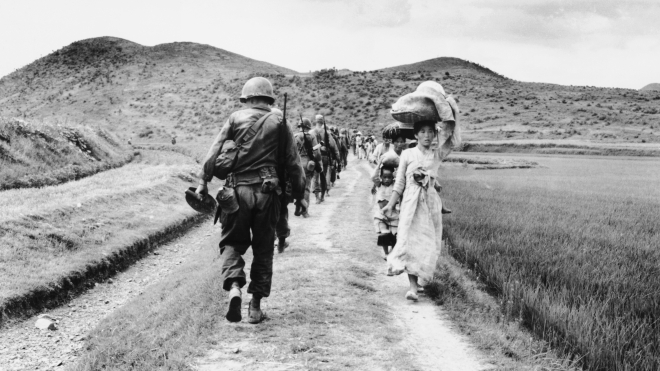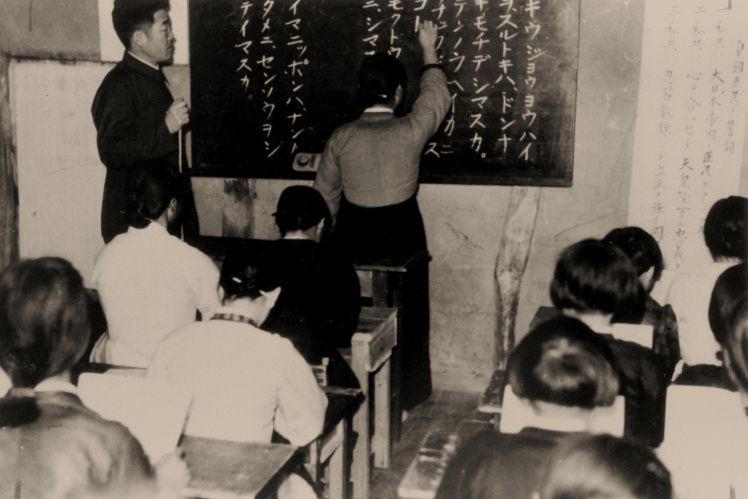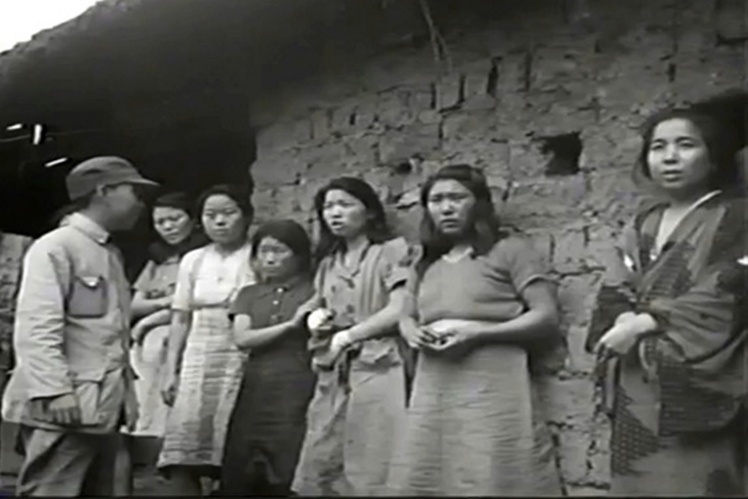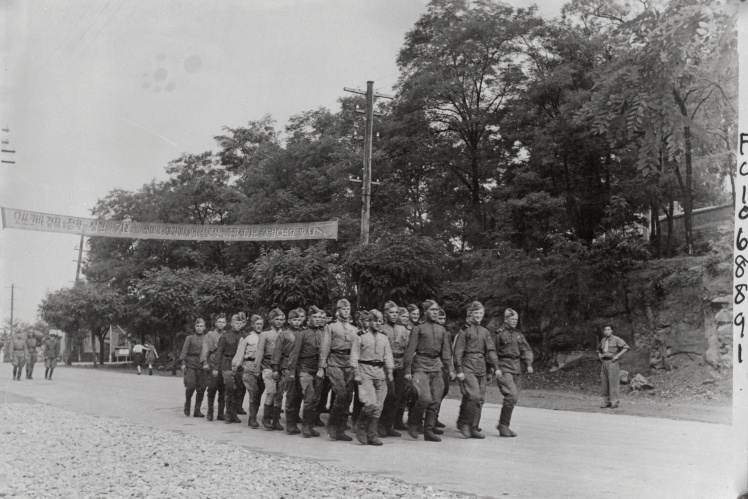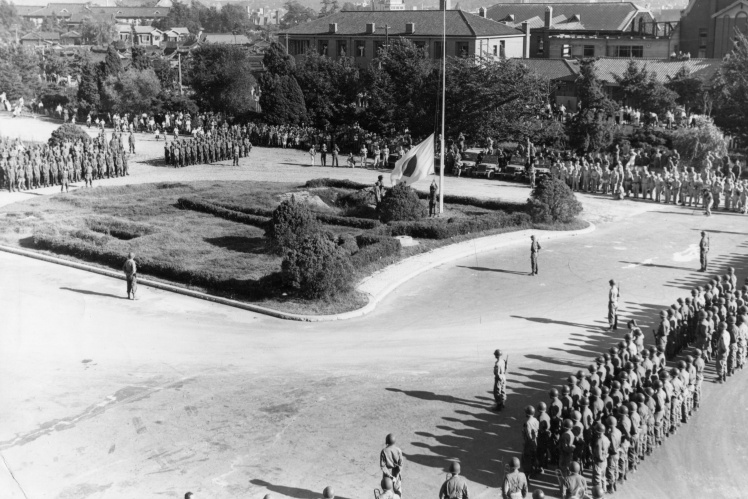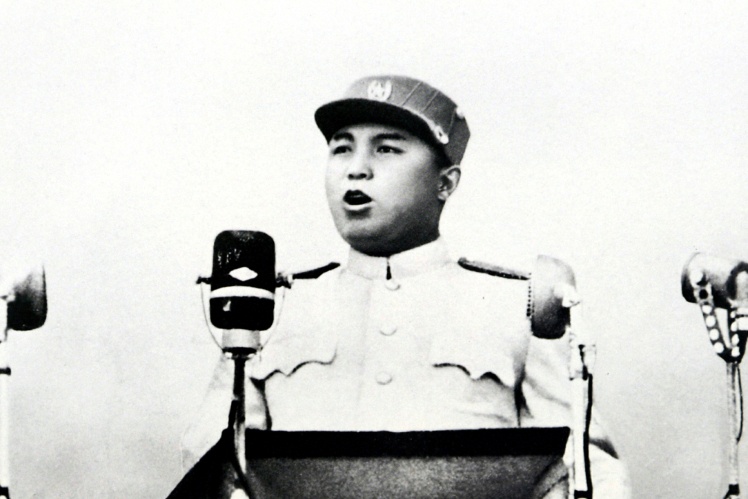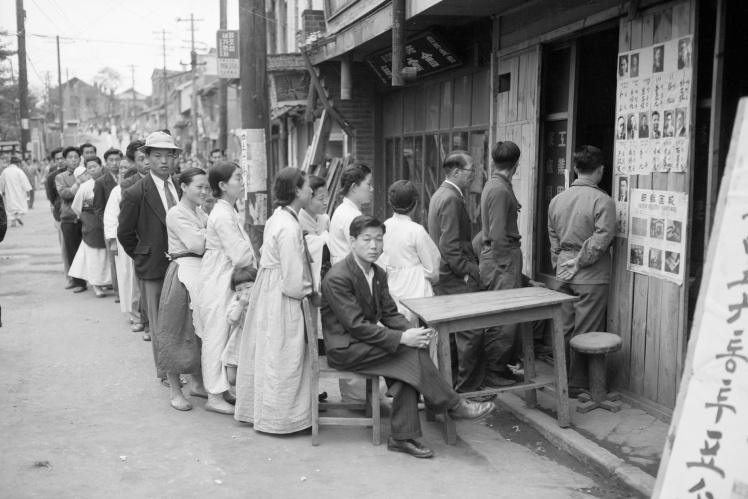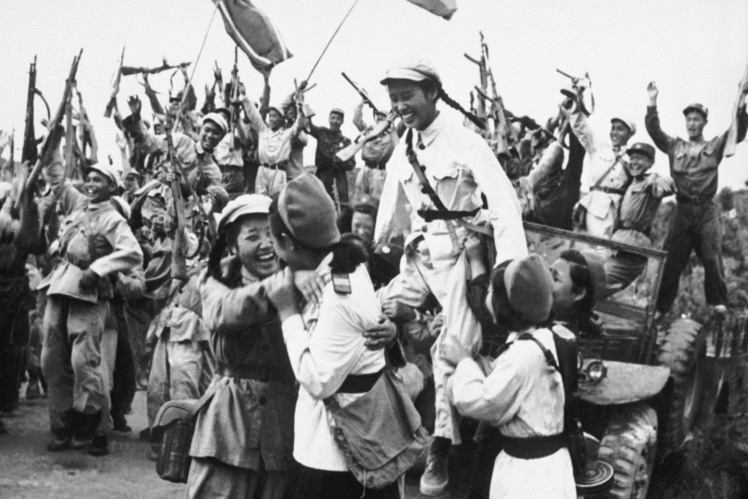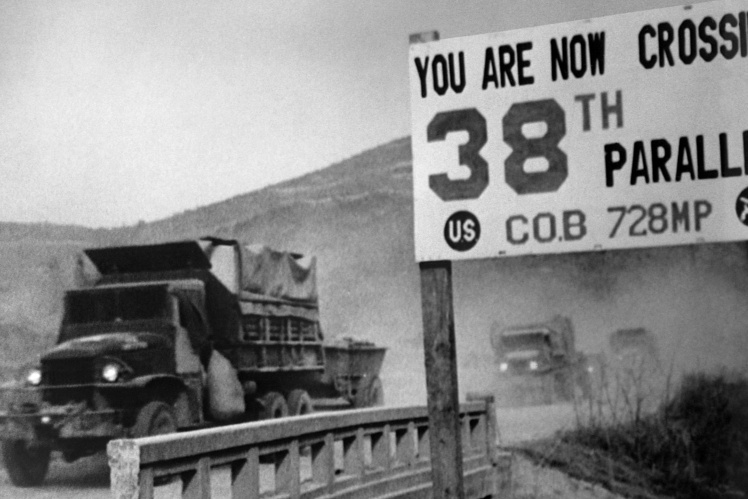At the end of the 19th century, Korea took advantage of the decline of the last Chinese empire and finally got out of its control. However, independence didnʼt last long. In 1905, Japan won the war with Russia and became the main power in the Far East.
The Japanese encroached on Korea since the beginning of the 19th century. And now, having got rid of the main competitor — the Russians, they got down to business even harder. In 1910, Japan finally took Korea under a protectorate, occupied it and turned it into its own general governorship. All this happened under the imperial slogans about "fraternal peoples with a common history." In fact, the Japanese banned not only the Korean language, but also Korean names — they forced them to be rewritten in the Japanese way. Natural and human resources were drained from the peninsula. Men were forcibly taken to the Japanese army, and women and girls from the age of 12 were turned into sex slaves. This continued until the end of the World War II.
A lesson in a Korean school during the Japanese occupation, 1942. Japanese soldiers select Korean women for sexual slavery, 1940s.
Getty Images / «Babel'»
At the beginning of August 1945, the USSR unilaterally broke the neutrality pact with the Japanese and launched an offensive against Japanese-occupied territories in the Far East. On August 11, Soviet troops entered Korea from the north. The Americans proposed to the Soviet Union to divide the peninsula into zones of occupation along the 38th parallel, that is, roughly in half. The US leadership doubted that the USSR would agree to this. Because the Americans at that time still lacked forces that could go to Korea. Сoincidentally, Stalin accepted this proposal. On August 16, Soviet troops stopped at the 38th parallel and waited for more than three weeks for the Americans to land in the south.
Map of the Korean War of 1950-1953 with the division of the peninsula along the 38th parallel.
Getty Images / «Babel'»
The Soviet leadership made concessions because, at that time, few people were interested in Korea. Her fate was not discussed at any of the conferences of the leaders of the anti-Hitler coalition — the USA, Great Britain and the USSR. So, in the working order, they agreed to create a Soviet-American commission that would help form a government, hold elections, and unite Korea into a single independent state.
Soviet soldiers in Pyongyang. American soldiers lower the Japanese flag in Seoul, 1945.
Getty Images / «Babel'»
However, relations between yesterdayʼs allies quickly deteriorated. And the Cold War began. So the question of the future fate of Korea was transferred to the newly created United Nations. According to the decision of the General Assembly, general democratic elections were planned for the entire Korean peninsula in May 1948. Then Stalin decided to lay a time bomb — UN observers were not allowed into the Soviet zone of occupation in the north. Therefore, elections were held only in the south, and in August 1948, the Republic of Korea appeared there, led by President Rhee Syngman. In less than a month, the North held its own "elections" and proclaimed the creation of the Democratic Peopleʼs Republic of Korea, led by the former leader of the communist partisans Kim Il Sung. Soviet troops left Korea at the end of 1948, and American troops at the beginning of the following year. However, both states left their military advisers there.
Kim Il Sung during a speech, 1948. The first president of the Republic of Korea Rhee Syngman, 1948. Voting under the auspices of the UN in South Korea, May 1948.
Getty Images / «Babel'»
Neither Rhee nor Kim made any secret of their intentions to extend their power over the entire Korean peninsula. Moreover, it was written in the constitutions of both republics. Moreover, both indicated Seoul as their capital. From the end of 1948, local border skirmishes and sabotage began between South and North Korea in the area of the 38th parallel. About 10 000 soldiers died before the full-scale war began.
From the spring of 1949, Kim Il Sung persuaded Stalin to help with a military invasion of South Korea. But the Soviet dictator was not up to it. His main focus was on the Chinese Civil War between the Communists led by Mao Zedong and the Nationalists led by Chiang Kai-shek. Stalin feared that in the event of another conflict in the region, the Americans would certainly intervene. So he strictly forbade Kim to attack South Korea. However, he gave the go-ahead for the modernization of the North Korean army to Soviet military advisers.
But by the end of the year, the situation changed. Mao won the war and established the communist Peopleʼs Republic of China, while his opponents fled to the island of Taiwan and established their own Chinese state there. In addition, on August 29, 1949, the USSR successfully tested its first atomic bomb, thereby breaking the US nuclear monopoly.
The ceremony of the proclamation of the Peopleʼs Republic of China in Beijing, 1949.
Getty Images / «Babel'»
The Soviet leadership thought this way: if the Americans did not intervene in the civil war in China, then they would definitely have no business in Korea. And this was actually confirmed by US Secretary of State Dean Acheson. In his January 12, 1950 speech on the United Statesʼ defense perimeter in the Pacific Ocean, he did not include Korea in the sphere of American national interests.
After that, Kim began to press Stalin even harder to give the go-ahead for the invasion. After the meeting in Moscow on April 10, 1950, the Soviet dictator decided to involve Mao Zedong in the case. A secret message was sent to him, which offered to "finally resolve the question of the unification of Korea by the Chinese and Korean comrades jointly, and in case of disagreement of the Chinese comrades, postpone the issue until a new discussion."
Stalin and the leadership of the USSR receive Mao Zedong in Moscow, 1949.
Getty Images / «Babel'»
Mao did not have to be persuaded for long. After the victory in the civil war, he seriously dreamed of world domination. One of his militant speeches was reduced to the fact that "first we will conquer the entire globe, and then we will think about the Sun." So China joined the arming of the North Korean army, and together with Soviet advisers developed a plan to invade the south.
At dawn on June 25, 1950, the North Korean army crossed the 38th parallel. It consisted of more than 170 000 soldiers, more than 150 Soviet tanks and about 170 aircraft. The official reason for the invasion was declared to be "a treacherous attack by the traitor Li Xingman." In fact, the attack was a surprise for South Korea. Its battle group at the time consisted of 93 000 soldiers, but was significantly inferior to the North Koreans in the number of armored vehicles, aviation and artillery. So the North Korean troops began to rapidly advance south.
Soviet tanks in service with the North Korean army during the Korean War of 1950-1953.
Getty Images / «Babel'»
The invasion was a surprise for the United States as well. As early as June 20, Secretary of State Dean Atchinson assured Congress and President Harry Truman that war was unlikely.
"If the best minds in the world set themselves the goal of finding us the worst place in the world for this damn war, the unanimous choice would be Korea," he said soon.
At an emergency meeting of the UN Security Council on June 25, a resolution demanding a cease-fire was adopted. But the DPRK was not going to stop, already on June 28 its troops occupied Seoul. Then the United Nations created a military coalition led by the United States to help South Korea. And American President Truman outlined the main task — to stop communist expansion. The USSR, as a permanent member of the Security Council, could use the right of veto and block these resolutions. However, from January 1950, he boycotted meetings in protest that China was represented in the UN by the government of Taiwan, and not by communist Beijing.
Vote in the UN Security Council to send military aid to South Korea, June 28, 1950.
Getty Images / «Babel'»
At the beginning of July 1950, the first units of the international contingent, under the leadership of the American military governor of occupied Japan, General Douglas MacArthur, began to land in the southeastern part of the Korean Peninsula. Here were the remnants of the South Korean army, squeezed from all sides by North Korean troops. By September, MacArthur was accumulating strength, and then went on the counter-offensive. And by the end of October, he defeated the North Korean army, liberated Seoul, captured Pyongyang and reached the Chinese border in the north of the peninsula.
American newsreel of the Korean War 1950-1953.
Getty Images / «Babel'»
Then Mao openly intervened in the war. More than 200 000 Chinese soldiers crossed the Korean border on October 25, 1950. And the USSR unofficially sent an air corps with the newest Soviet MiG-15 jet fighters to help. UN forces were forced to retreat to the south. In early January 1951, Seoul again passed to North Korea.
The troops of the DPRK and China celebrate one of the local victories over the Americans in the fall of 1950. UN troops withdraw from North Korea beyond the 38th parallel after China entered the war in the fall of 1950.
Getty Images / «Babel'»
Under such conditions, General MacArthur demanded permission from the American leadership for large-scale bombing of Chinese territory. And soon he reached proposals to use nuclear weapons and involve the Taiwanese army in order to "end communism once and for all" in this region. But President Truman feared that Stalin would retaliate by starting a new conflict in Europe, which would eventually escalate into World War III. So in the spring of 1951, MacArthur was recalled from Korea. In May, the UN troops went on the offensive again and pushed the enemy beyond the 38th parallel. In June 1951, the war reached a stalemate and became a positional one.
Commander of the UN forces in the Korean War, General Douglas MacArthur, 1950. An American gunner rests among shells at a position near the 38th parallel, 1951.
Getty Images / «Babel'»
Despite the fact that intense fighting lasted for about a year, the Korean War was extremely bloody. The South Korean side and its allies lost about a million soldiers. The losses of North Korea and China reached more than one and a half million. But even more civilians died.
Killed civilians and refugees during the Korean War.
Getty Images / «Babel'»
Now, Mao Zedong and Kim Il Sung were not as belligerent as they had been a year ago. They themselves preferred to sit down at the negotiating table and agree on the division of Korea. The USA also agreed to such a scenario. But Stalin was against it. Mao and Kim received an order from Moscow to "draw a firm line, show no haste and no interest in concluding the negotiations as soon as possible."
North Korean leader Kim Il Sung signs an armistice agreement with South Korea, July 27, 1953.
Getty Images / «Babel'»
So the negotiations were fruitless and were repeatedly interrupted due to local fighting — until the death of the Soviet dictator in March 1953. Already on July 27 of the same year, the parties finally agreed to a cease-fire treaty, which again divided the Korean peninsula along the 38th parallel. However, the peace agreement that would officially end the war was never signed by North and South Korea. In addition, the Korean War went down in history as the first hot conflict of the Cold War, which became a prototype for future clashes between the USSR and the West in different parts of the world.
Get together and donate to the Armed Forces of Ukraine so as not to repeat the "Korean scenario". And if possible, support independent journalism: 🔸 in hryvnia , 🔸 in cryptocurrency , 🔸 Patreon , 🔸 PayPal: [email protected].
